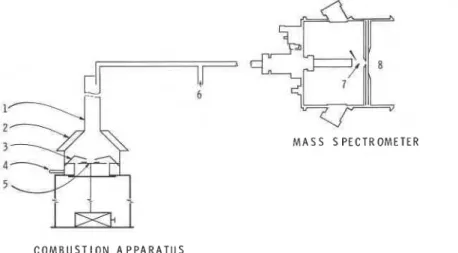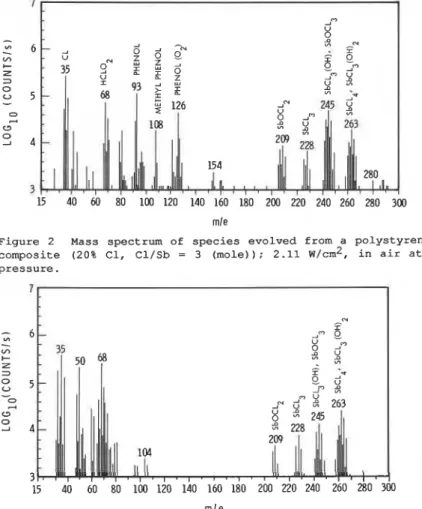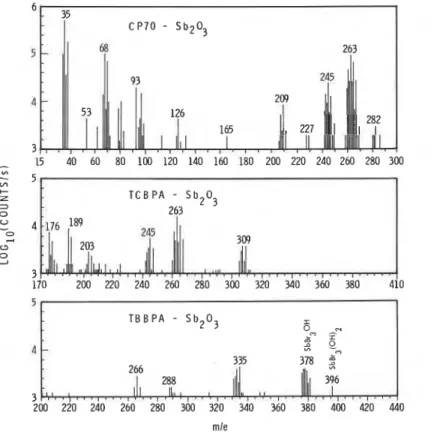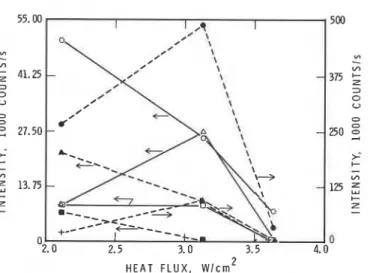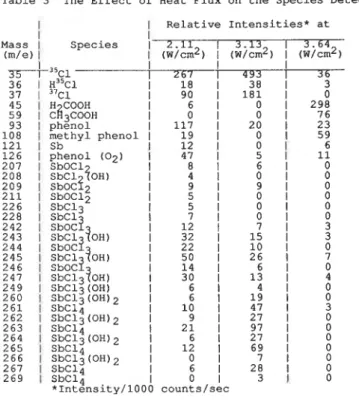Publisher’s version / Version de l'éditeur:
Vous avez des questions? Nous pouvons vous aider. Pour communiquer directement avec un auteur, consultez la première page de la revue dans laquelle son article a été publié afin de trouver ses coordonnées. Si vous n’arrivez pas à les repérer, communiquez avec nous à PublicationsArchive-ArchivesPublications@nrc-cnrc.gc.ca.
Questions? Contact the NRC Publications Archive team at
PublicationsArchive-ArchivesPublications@nrc-cnrc.gc.ca. If you wish to email the authors directly, please see the first page of the publication for their contact information.
https://publications-cnrc.canada.ca/fra/droits
L’accès à ce site Web et l’utilisation de son contenu sont assujettis aux conditions présentées dans le site
LISEZ CES CONDITIONS ATTENTIVEMENT AVANT D’UTILISER CE SITE WEB.
Paper (National Research Council of Canada. Institute for Research in
Construction), 1988
READ THESE TERMS AND CONDITIONS CAREFULLY BEFORE USING THIS WEBSITE. https://nrc-publications.canada.ca/eng/copyright
NRC Publications Archive Record / Notice des Archives des publications du CNRC :
https://nrc-publications.canada.ca/eng/view/object/?id=8b5e397a-3441-41c5-a95a-a4bb04fb76eb
https://publications-cnrc.canada.ca/fra/voir/objet/?id=8b5e397a-3441-41c5-a95a-a4bb04fb76eb
NRC Publications Archive
Archives des publications du CNRC
This publication could be one of several versions: author’s original, accepted manuscript or the publisher’s version. / La version de cette publication peut être l’une des suivantes : la version prépublication de l’auteur, la version acceptée du manuscrit ou la version de l’éditeur.
For the publisher’s version, please access the DOI link below./ Pour consulter la version de l’éditeur, utilisez le lien DOI ci-dessous.
https://doi.org/10.4224/40001381
Access and use of this website and the material on it are subject to the Terms and Conditions set forth at
The flame retardance mechanism of the Sb2O3-Halogen system:
gaseous species detected by mass spectrometry
S e r
TH1
N21d
Natlonal Research
Conseil natlonal
no.
1 5 9 $ 1
c
ouncil Canada
de recherche8 Canada
c .
2
;
BLDG
Institute for
lnstitut de
Research in
recherche en
- - -
Construction
construction
The Flame Retardance Mechanism
of
the Sb2Or
Halogen System:
Gaseous
Species Detected by
Mass Spectrometry
by Xifang Hu, J.B. Stewart, F.R.S. Clark and Y. Tsuchiya
A N A L Y Z E D
Reprinted from
Fire Safety Science
Proceedings of the Second International Symposium
Tokyo, Japan, June 13-17,1988
p. 327-336
(IRC Paper No. 1594)
NRCC 30419
N R C-
CISTII R C
L I B R A R Y
JUi
1 7
1989
B I B L I O T H ' E Q U E
I R C
@NRe-
lClST--
- -
Les esptces gazeuses pdsentes au-dessus d'khantillons de
polystyrhe contenant du Sb2O3 et certaines paraffines
chlorbes, du
t6trachlorobisphCnol
A
et du
t6trabromobisphtnol A ont CtC dCmminCes au moyen de la
spectromCtrie de masse par ionisation chimique sous
pression atmosph6rique lors d'une exposition il la chaleur
radiante en m n c e d'air. On a constat6 que le SbOC13, le
SbC13(0H), le SbC4 et le SbC13(OH)2 Ctaient pdsents en
plus grande quantitC que le SbC13, l'espike il laquelle est
n d e m e n t attribude I'actian
i d - dem SW- Cb-halo<
"aP
Pre
d'ic
The Flame Retardance Mechanism
of the Sb,O,-Halogen System: Gaseous
Species Detected by Mass Spectrometry
XIFANG HU*. J. BRIAN STEWART, FERRERS R. S. CLARK,
and YOSHIO TSUCHIYA*
*
Institute
for
Research in Construction National Research Council of Canada Ottawa, Ontario, K I AOR6
CanadaSYNOPSIS
The gaseous species present above samples of polystyrene containing Sb2O3 and selected chlorinated paraffins, tetrachlorobisphenol A and tetrabromo-
bisphenol A were determined by atmospheric pressure chemical ionization
mass spectrometry during exposure to radiant heat in the presence of air.
SbOC13, SbC13 (OH), SbClq, and SbC13 (OH) 2 were found to be present in
greater amounts than SbC13, the species normally identified with the fire retardant activity of Sb-halogen systems. Mass spectral analyses were performed on the vapour above SbC13 in air at atmospheric pressure and room temperature, to identify these species produced from the reaction between Sb2O3 and the chlorine source.
INTRODUCTION
Antimony trioxide in conjunction with a halogenated organic compound constitutes one of the most commonly used flame retardant systems for polymeric materials [1,2]. Because of its effectiveness and commercial importance, the antimony-halogen system has been studied extensively
[1,3,41. During the last decade several studies of the synergistic effect
of Sb2O3 in the presence of halogen have been published; most [5-93
identify the active species and determine the phase in which the flame retardant action takes place.
Although there is only limited agreement about the antimony species present and their roles in fire retardance, each study indicates the presence of SbC13. Significantly, none of these studies were carried out under oxidative (real fire) conditions.
The aim of this work was to evaluate the action of the Sb2Og-halogen system in a more realistic fire situation, by monitoring the gaseous species produced from fire-retarded polystyrene (FRPS) in an oxidative atmosphere (air). Several species not previously reported in such systems, i.e., SbOC12, SbOC13, SbC13, SbC13 (OH), SbC13 (OH) 2, SbBr3 (OH), SbBr3 (OH) 2 ,
SbClq have been identified in the gas phase. A modified mechanism for fire retardant action of the Sb203-halogen system has been suggested that accounts for these species.
*Permanent address: Tianjin Fire Research ~nstitute, Fire ~ngineering
Laboratory, Tian jin, China
**To whom correspondence should be directed
< EXPERIMENTAL
Materials
FRPS samples were made from polystyrene (PS) pellets (Aldrich Chemical Co. Ltd.), antimony trioxide (Fisher Scientific Co.) and halogenated organic fire retardants, all used as received without further purification. Three halogenated fire retardants were used in the study: Cereclor 70 (CP70, solid chlorinated paraffin, ICI), tetrachlorobisphenol A (TCBPA, Polysci- ence Inc.) and tetrabromobisphenol A (TBBPA, Polyscience Inc.)
.
Samples containing chlorinated compounds, i.e., CP70 and TCBPA, were made by the same procedures as described in a previous paper [lo], except that Sb2O3 was added. The chlorinated compound and polystyrene were thoroughly mixed in the presence of methylene chloride. Antimony oxide was then added to the viscous mixture. The solvent was removed during storage for 3 hours at 60 C under vacuum. In order to avoid interference from the trace methy- lene chloride in the mass spectral analysis, TBBPA-Sb203-PS Samples were mixed at 140 C with a mixer/extruder.
Sample sheets, 0.8 mm thick, were prepared from the samples using a hot press [lo] operated at 160 C in air. Antimony trichloride (SbC13 99% reagent) was used as received for mass spectral analysis of vapour species of SbC13 in air.
Instrumentation and Test Procedures
A combustion apparatus composed of a radiative cone, cone-shaped quartz tube (of 40 mm inner diameter at the top and 164 mm inner diameter at the bottom) and a spark igniter [ll] was connected to an atmospheric pressure chemical ionization tandem mass spectrometer (APCI/MS/MS), a SCIEX model TAGA 6000 as shown in Figure 1.
Purified and dry (<lo ppm water) air from a cylinder was forced in the combustion apparatus through an annular sinter below the sample position
d-\l-'
M A S S S P E C T R O M E T E R 4 -5yi,
C O M B U S T I O N A P P A R A T U SFigure 1 Experimental set-up showing the combustion apparatus and mass spectrometer; (1) cone-shaped quartz tube, (2) electric radiative heater, (3) spark igniter, (4) air inlet, (5) sample holder, (6) make-up air inlet, (7) atmospheric pressure chemical ionization ion source, (8) mass analyzer torr)
.
at 9 L/min throughout the combustion and during the mass analysis, allowing examination under conditions close to those expected in many fires. Before testing, the heat flux of the cone heater was measured by a radiometer at the sample position.
Samples were held by two circular stainless steel plates, both 100 mm in diameter and 0.7 mm thick. The upper plate was pierced with a hole 45 mm in diameter, defining the area of the sample exposed to heat. A spark igniter was placed 10 mm centrally above the sample and gave sparks at 1 second intervals for a duration of 1/10 second.
The tandem mass spectrometer used for mass analysis has been described elsewhere [12,131. Effluent gases from the combustion zone were conducted from near the top of the quartz tube to the spectrometer through a glass capillary (1.8 mm inside diameter, 400 mm long) and a soft corrugated polyethylene pipe (20 mm inside diameter, 400 mm long)
.
The species residence time in the transfer line to the spectrometer was approximately1 second. In order to obtain a baseline, reference mass spectral data acquisition was started 30 s prior to sample insertion.
SbClg vapour was monitored in argon or air/argon (<5 ppm water) mixtures at ambient temperature using a modification of the apparatus in Figure 1. A T-shaped glass pipe (22 mm inside diameter) holding a small vial of SbC13 was connected by a soft corrugated polyethylene pipe (20 mm inside diameter, 400 rmn long) to the mass spectrometer. Air or air/argon mixtures forced under the vial at SL/min, conducted the analyte to the inlet port of the mass spectrometer.
RESULTS AND DISCUSSION
Identification of Gaseous Species from the oxidative pyrolysis of Sb203-CP70-PS
Polystyrene containing CP70 and Sb203 (20% C1 by weight and mole ratio of Cl/Sb = 3) was heated under the radiative cone (of total flux 2.11 w/cm2 at the sample position) in air and the gas phase was sampled by the APCI MS/MS. Figure 2 shows the mass record of the species evolved after an exposure sufficient to cause intermittent flame flashing but no sustained flame. Several fragments containing chlorine were detected: m/e (mass- charge ratio) = 35 (Cl), 36 (HCl), 68 (HC102), 209 (SbOC12), 228 (SbC13), 244 (SbOC13), 245 (SbC13 (OH) ) , 262 (SbC13 and 263 (SbC14)
.
Phenol(m/e = 93), methyl phenol (108) and a cluster of phenol and 02 (126) were also observed.
Analysis of Vapour Species from SbC13
In order to identify those species in Figure 2 produced from the reaction between Sb2O3 and the chlorine source, mass spectral analyses were perfor- med of the vapour above SbC13 in air at atmospheric pressure and room temperatures. Figure 3 shows the mass spectra of the vapour above SbC13 analyzed using the modified apparatus mentioned before. The following species were observed (Figure 3) : species at m/e = 35 (Cl), 36 (HCl), 68 (HC102), 209 (SbOC12), 228 (SbC13), 244 (SbOC13), 245 (SbC13 (OH) ) 262 (SKI3 (OH) 2), 263 (SbC14)
.
SbC13 would be expected to hydrolyze readily under these conditions to produce SbOCl (m/e = 174), Sb405C12 or Sb203, and HC1 [3,91. The presence
7
-
z
6 m + Z 2 0 0 5-
0-
C3 0 2 4 3 mleFigure 2 Mass spectrum of species evolved from a polystyrene-CP70-Sb203 composite (20% C1, Cl/Sb = 3 (mole)); 2.11 w/cm2, in air at atmospheric pressure.
m l e
Figure 3 Mass spectra of the vapour species above SbC13 at atmospheric pressure and ambient temperature.
of HC1 in relatively large amounts in the present work (m/e 35, 36, 37) is thus consistent with the hydrolysis of SbC13. However, no evidence was found in the present work for the presence of SbOC1, in agreement with observations by Lum [6] on the laser-vaporized species of SbOC1.
Ion-molecule clustering is known to occur in the APCI system [141. SbC13 may thus react with ions such as 0-, 0-(H20) or OH-(H20), which are present in the negative mode in the APCI source, to produce antimony oxychlorides:
SbC13
+
OH- (H20)+
SbC13 (OH) -+
Hz0 SbC13+
0- +SbOC13-The radical anion of m/e = 68, attributed to HC102-, may be a cluster of HC1 (a hydrolytic product of SbC13) and 02.
330
~
The major species resulting from the interaction of 5b203 and CP70 (Figure 2) are similar to those from SbC13 (Figure 3), except that in the former case intensities of SbC13(0H) (m/e = 245) and SbOC13 (m/e = 244) appear higher and SbC13 (m/e = 228) lower. This similarity suggests that the major species of the action of Sb2O3 with a chlorine source is SbC13 under these experimental conditions.
Two narrow-scan-range mass spectra have been taken for the vapour phase above SbC13; assignments for the molecular ions of SbOC13 and SbC13(0H), SbC13(0H)2 and SbClq have been made on the basis of calculations of masses for the possible combinations of the isotopes of Sb (12'sb, 57.25%; 123~b, 42.75%) and C1 (35~1, 75.53%; 3 7 ~ 1 , 24.47%) [151. Table 2 shows the compa- rison of the calculated and experimental results. All the predicted masses were observed.
Table 1 Vapour Phase Masses of SbC13
-
Calculated Probabilities and Analyzed Relative IntensitiesMolecular Weight, calculated from1 Relative Mass Ratio ( % )
the possible combinations of Sb
I
and C1 isotopes ICalc.
I
ExperimentalIt is clear that the relative (referring to the most intense inon in the group) intensities tested for each compound agree well with the calculated probabilities for SbOC13, SbC13(0H), SbClq and SbC13(0H)2. The intensities of mass clusters of SbC12(0H), SbOCl2 and SbC13 from Figure 3 are in agreement with calculated data. It is therefore concluded that SbC12(0H), SbOC12, SbC13, SbC13(0H), SbC13 and SbC14 were present in the vapour phase of SbC13, as well as in the gas phase of the oxidative pyrolysis of a Sb203-CP70 system under atmospheric pressure.
A profile of the major vapour species of SbC13 evolved over time was obta- ined in argon, air/argon (1:25), air/argon (1:l). In pure argon ( 9 9 . 9 9 % )
the intensity of SbC13 is, as expected, higher than other oxygen- or hydroxyl-containing antimony chlorinated compounds. However, by increasing the air to argon ratio, the intensity of SbC13 dropped relative to that of the other species. The results agree with the proposed mechanism of the production of these species.
I
Effect of Different Halides
Three kinds of halogenated compounds, CP70, TCBPA and TBBPA, were used to compare the action of different halides in combination with SbZOj. Mass spectra for polystyrene containing three fire retardants (20% halides by weight, halogen/Sb(mole) = 3), exposed to radiation (3 w/cm2) in air are shown in Figure 4. The mass spectra just before ignition (at 3.1 w/cm2) for the CP70-Sb203 combination are quite similar to those in Figure 2 (which were produced from samples heated at 2.1 w/cm2)
.
Analysis of the distribution of intensities in the high mass clusters provides strong evidence of the presence of SbC12(0H) (208), SbOC12 (209), SbC13 (227), SbOC13 (244), SbC13 (OH) (245), SbC13 (OH) 2 (262) and SbC14 (263).
Oxidative pyrolysis of PS containing TCBPA and Sb203 yielded a gaseous mixture that differed from PS containing CP70 and Sb203. The intensities of the masses were in general weaker for TCBPA/Sb203, but two groups of peaks at m/e = 245 and 263 suggest the presence of SbOC13 (244), SbC13 (OH) (245), SbC13(0H)2 (262) and SbC14 (263) as before. Given the similarity in product distribution between the two chlorine-based fire retardants, it is likely a common intermediate, probably HC1, is involved. The formation of HC1 from chlorinated paraffins should be more facile than from chlorinated phenols, and if subsequent reaction with Sb203 to produce the active fire retardant is not rate limiting, chlorinated paraffins should be more
6 5 4 3
-
15 40 60 80 100 120 140 160 180 200 220 240 260 280 300"
5 vl + z 3 o2
4 0 4 a T C B P A - Sb203 263 -176 189 203,
j,II
. , ; q 4 , ; . ,1
! , , , , , . r , , . , , , , , . . , , , 0 2 309 3 170 200 220 240 260 280 300 320 340 360 380 4105
5
2
r
1
4 335 378$
266 288 396 3 200 220 240 260 280 300 320 340 360 380 400 420 440 mleFigure 4 Mass spectra of gaseous species above samples of polystyrene containing halogen fire retardants exposed in air to radiant heat (about 3
~ / c m 2 )
I
i
-
effective fire retardants when combined with Sb2O3. Consistent with this hypothesis, the limiting oxygen index (LOI) is higher and the time to ignition is longer for polystyrene treated with CP70/Sb203 (Table 3). Other explanations of the LO1 performance, including viscosity effects, are also possible.Table 2
Comparison of Ignition Time and LO1 of Different Halogen-Containing Composites
I Ignition by Radiation Cone I
Sample lHeat Flux (w/cm2)
I
Time (s)I
LO1I
I
I
PS/CP70/Sb203
I
3.13I
60 128.2 (22.0 without Sb203)PS/TCBPA/Sb203 j 3.02 I 31 127.0 (24.3 without Sb203)
PS/TBBPA/Sb203
I
3.02 INo Sustained1 30.0 (27.2 without Sb203)I
I
Flame 1Shown at the bottom of Figure 4 is the mass spectrum obtained from the gas , above a sample of P S / T B B P A / S ~ ~ O ~ . The presence of SbBr3(0H), SbOBr3 and SbBr3(0H)2 in the volatile products was deduced from the natural abundance of the isotopes involved and the relative intensities of masses in the high mass clusters at m/e = 378, 379 and 396, respectively. It seems that the interaction between bromine source and Sb2O3 proceeds in a manner similar to the chlorine-containing systems. This finding may be compared with the work of J. Simon [El, who reported that neither SbxBry nor SbOBr, compounds were detected.
The Influence of Heat Flux on the Oxidative Pyrolysis of Polystyrene Containing Sb203-CP70 55.00 I
I
500 I VI-
VI Ln-
v, 41.25-
3752
2 0 3 0 0 U 0 0 0 27.50-
250G
I--
I- >- Ln Ln-
E
13.75-
125E
I- Z-
I- Z-
0 0 2.0 2.5 3.0 3.5 4.0 H E A T F L U X , w / c r n 2Figure 5 Dependence of intensities of key species in gas phase above polystyrene-CP70-Sb203 (20% CP, Sb/C1 = 3 (mole)) just before ignition as function of radiant heat flux; 0 = SbC130H, A = SbC13 (OH) 2, 0 = SbOC12,
A = SbOC13,
.
= SbC13,+
= SbC14, 8 = 3 5 ~ 1 .Figure 5 and Table 3 show the comparison of volatile products evolved from
PS/CP70/Sb203 (20% C1, Cl/Sb = 3) just before ignition, at three different
heat fluxes (2.11, 3.13, 3.64 w/cm2).
Table 3 The Effect of Heat Flux on the Species Detected
I 1 Relative Intensities* at
I
I MassI
SpeciesI
I
I II
36 1 H~'c~ 37 1 "ci 1 90 1 181 1 0 45 1 H COOHI
6 1 0 1 298 59 1 C ~ ~ C O O HI
0I
0 1 76 93 1 phenol 1 117 1 20 1 23 108 1 methyl phenol l 19 1 0 1 59 121 1 Sb 1 12 1 6 126 1 phenol (02) 1 47 1 207 1 SbOCl 8I
6 1 0 208 1 SbCl '?OH)I
0I
0 209 1s ~ o c ~ . ~
I
9 1 0 211 1 SbOC12I
5 1 0I
226 1 SbC13 5I
0 228 1 SbClI
0I
242 1 S ~ O C ? 1 12 1 3 244 1 S ~ O C ? 243 1 SbCl ?OH) 1 32 1 15I
0 1 2 2 1 1 0 1 245I
SbCl ?OH) 1 50 1 26 1 246 1 sboc? 1 14 1 6 1 0 247 1 s ~ c ~ ~ ? o H ) 1 30 1 13 1 4 249 1 SbC13(0H)I
6 1 4 1 0 260 1 SbC13(0H)2I
6 1 1 9 1 0 261 ] SbC14 1 10 1 47 1 3 262 1 SbC13(0H)2I
9 1 2 7 1 0 263 1 SbC14 1 21 1 97 1 0 264 1 SbC13(0H)2I
6 1 2 7 1 0 265 1 SbC14 1 12 1 69 1 0 266 1 SbC13(0H)2 I 0I
7 1 0 267 1 SbC14I
6 1 2 8 1 0 269 1 SbC14I
0 I 3 I 0 *Intensity/1000 counts/secIntensity data presented in Figure 5 for each species are those with the highest intensity in each cluster: C1 (35), SbOC12 (209), SbC13 (228),
SbOC13 (244), SbC13 (OH) (245), SbC13 (OH) 2 (262) and SbC14 (263)
.
When theheat flux was increased from 2.11 to 3.64 w/cm2, the relative intensities of all species dropped, except those of C1, SbC14 and SbC13(0H)2 which
showed maxima at 3.13 w/cm2. The relative intensities of 3 5 ~ 1 and SbC14
are much higher (for instance, the intensity of 3 5 ~ 1 at 2.11 w/cm2 is 5 to
10 times higher) than those of the other species.
It is of particular interest that SbC13, the most commonly detected species in many studies [4-81 of the Sb203-halogen source system, is the least intense among those identified. The formation of oxygenated species from the admixture of SbC13 and air has been described in a previous section. In the present experiment the SbC13 produced in situ might also abstract the 0. or .OH existing in flames [16] to form species such as SbOC13 or SbC13(0H) and SbC13(0H)2. The relative intensities of SbC13 (228) in the realistic fire conditions (Figures 2 and 4) are lower than that above SbC13 (Figure 3), a finding supporting the abstraction.
Pitts [3] in his review of antimony-halogen synergism assumed that SbC13 is the effective free radical trap or chain breaker in the gas phase burning process. The discovery, in the present work, of species like
SbOC13 a n d SbC13(0H) which might r e s u l t from t h e d i r e c t c a p t u r e of oxonium a n d h y d r o x y l r a d i c a l s i n t h e f l a m e b y SbC13, p r o v i d e d i r e c t e v i d e n c e t o s u p p o r t P i t t s ' h y p o t h e s i s .
PRODUCT EVOLUTION PROFILE
A t y p i c a l s i n g l e i o n p r o f i l e f o r t h e main g a s e o u s s p e c i e s p r o d u c e d from t h e c o m p o s i t e of P S / S ~ ~ O ~ / C P ~ O ( 2 0 % C1, C l / ~ b = 3 ) , a s it i g n i t e d a t 3 . 1 3 w/cm2, i s shown i n F i g u r e 6.
I
I t i s s e e n t h a t t h e s e q u e n c e o f e v o l u t i o n o f t h e s e l i o n s i s : p h e n o l (m/e = 9 3 ) , C1 ( 3 5 ) , SbC13 (OH) ( 2 4 5 ) , SbC14 (263).
The o x i d a t i v e d e g r a d a t i o n of PS s u b s t r a t e t o p h e n o l o c c u r r e d f i r s t w e l l b e f o r e i p i t i o n . HC1 ( d e t e c t e da s C1-) was t h e n r e l e a s e d from t h e c h l o r i n a t e d p a r a f f i n , which s u b s e q u - e n t l y r e a c t e d w i t h Sb2O3 ( i n t h e s o l i d p h a s e ) t o p r o d u c e v o l a t i l e SbC13.
SbC13, t h e a c t u a l f l a m e r e t a r d a n t [4, 161 m i g h t r e a c t w i t h t h e f r e e
r a d i c a l s 0 - o r -OH i n t h e f i r e a n d r e s u l t i n t h e f o r m a t i o n of SbOC13 o r S b C 1 3 ( 0 ~ ) e t c . The SbC14 c o u l d s u b s e q u e n t l y have been formed by r e a c t i o n o f SbC13 (OH) w i t h HC1.
H a s t i e [ 1 6 ] h a s p r o p o s e d a mechanism of f l a m e . i n h i b i t i o n f o r Sb2O3-
h a l o g e n a t e d s y s t e m s . Based on h i s p r o p o s a l a n d on t h e s p e c i e s d e t e c t e d i n
110 7 CL mle = 35 MAX COUNT = 884096 50 -
110 r PHENOL rnle = 93 MAX COUNT = 160032
SbCL4 mle = 263 MAX COUNT = 110000
A
TIME, m i n
F i g u r e 6 Gaseous s p e c i e s above polystyrene-CP70-Sb203 (20% C1, S b / ~ l = 3
( m o l e ) ) ; s i n g l e i o n m o n i t o r i n g of C1 (m/e = 3 5 ) , C6H50H ( m / e = 9 3 ) ~
SbC13(0H) (m/e = 245) a n d SbClq (m/e = 263) a s a f u n c t i o n o f e x p o s u r e t i m e
this study, the main reactions involved in the fire retardant effect of the Sb203-chlorine system may be summarized as follows.
Decomposition of CP+ HC1 Sb203
+
6 HC1+
2 SbClj+
3 H20 SbC13+
OH+
SbOC12 + HCl SbC13+
H20+
SbC12 (OH)+
HC1 SbC13+
OH+
SbC13 (OH) SbC13+
0+
SbOC13 SbC13 (OH)+
OH+
SbC13 (OH)2 SbC13 (OH)+
HC1+
SbC14+
Hz0It is clear that SbC13 plays a key role in the fire retardant reactions of the Sb203-halogen systems. Further work is required to explore the characteristics of the system in real fire combustion and to determine the nature of the synergistic effect of combining Sb and C1.
ACKNOWLEDGEMENT
The authors wish to thank J. ~ a t h h for the preparation of the radiation cone. One of the authors,.Xifang Hu, thanks the Institute for Research in Construction, National Research Council of Canada and the Fire Bureau of China, People's ~ e ~ u b f i c of China for their support of the study.
REFERENCES
Hirschler, M.M., Develop. Polym. Stab.,
5,
107 (1982).Aseeva, R.M., and Zhikov, G.E., Develop. Polym. Stab., 7, 233 (1984). Pitts, J.J., J. Fire Flammability,
3,
51 (1972).Hastie, J.W., and McBee, C.L., ACS Symposium Series,
16,
118 (1975).
Brauman, S.K., and Brolly, A.S., J. Fire Retardant Chem.,3,
66(1976).
Lum, R.M., J. Polym. Sci., Polym. Chem. Ed.,
5,
489 (1977). Ballistreri, A. Foti, S., Montando, G., Pappalardo, S., et al, J Polym. Sci., Polym. Chem. Ed.,11,
2469 (1979).Simon, J., Kantor, T, Kozma, T., and Pungor, E., J. Thermal Anal. 25, 57 (1982).
Fenerty, J., Pearce, J., and Jones, S.A., Thermochim. Acta, 85, 31 (1985).
Hu, X.F. and Clark, F.R.S., The Use of the 1SO/TC92 Test for Ignitability Assessment, Fire and Materials, in press.
Yusa, S., Development of Laboratory Test Apparatus for valuation of Toxicity of Combustion Products of ate rials in Fire, 7th UJNR, U.S.- Japan on Fire Research and Safety, Washington, DC, October 24-28, 1983.
French, J.B., Davidson, W.R., Reid, N.M., and Buckley, J.A., Trace Monitoring by Tandem Mass Spectrometry, in "Tandem Mass Spectrometry" F.W. McLafferty, Ed., John Wiley & Sons, New York, 1983.
Tsuchiya, Y., TAGA/APCI/MS/MS, A New ~echnique for the Study of Pyrolysis and Combustion Products, in "Fire Safety Science - Proceedings of the First International Symposium", p. 411, 1986.
TAGA 6000 Reference Manual, TS21500, SCIEX, 1981, SCIEX, Thornhill, Ontario, Canada.
The Merck Index, 10th ed., Merck & Co. Inc., Rahway, NJ, 1983. Hastie, J.W., J. of Research of the National Bureau of Standards - A. Phys. and Chem.,
